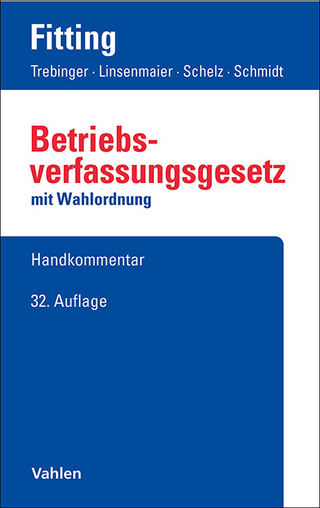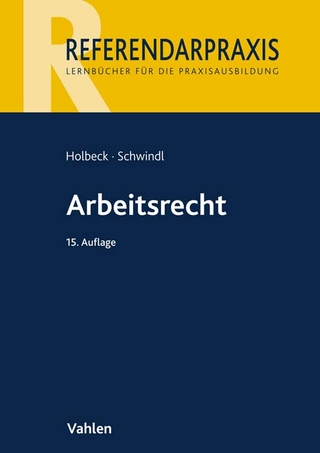
A Pluralist Theory of Age Discrimination
Hart Publishing (Verlag)
978-1-5099-3376-1 (ISBN)
This book outlines and defends a pluralist theory of age discrimination that assists in making the distinction between justified and unjustified age-differential treatment. The theory identifies the principles that explain when and why age-differential treatment wrongs people and the principles that can justify this treatment. It is a pluralist theory because it recognises that age-differential treatment can wrong people for a number of different, overlapping reasons, and these different reasons should inform how we apply age discrimination law. The pluralist approach to age discrimination theory can improve legal reasoning in age discrimination cases by articulating the relevant principles and competing interests that are at stake in age discrimination claims.
In constructing the theory, the book adopts the reflective equilibrium method. This requires that we examine our initial moral beliefs about age discrimination by seeking coherence with beliefs we have about similar moral and philosophical issues and revising the initial beliefs as a result of challenges to them. In applying this method, the book identifies the following five principles to form a pluralist theory of age discrimination: equality of opportunity, social equality, respect, autonomy and efficiency.
Stuart Goosey is Lecturer at the University of Leeds School of Law.
1. Introduction
I. Age as a Protected Characteristic
II. The Value of a Theory of Age Discrimination
III. Rejecting Unitary Theories of Discrimination
IV. Towards a Pluralist Theory of Age Discrimination
V. The Scope of this Book
VI. Possible Objections to Courts and Tribunals Using a Theory of Age Discrimination in Adjudication
VII. The Reflective Equilibrium Method
VIII. Criticism of Reflective Equilibrium
IX. The Limitations of Reflective Equilibrium
X. The Structure of this Book
2. The Legal Context
I. The Structure of Age Discrimination Law
II. Proportionality as Moral Reasoning
III. The Possible Implications on Age Discrimination Law of the UK Exiting the European Union
IV. The Proportionality Test in UK Age Discrimination Cases
V. Conclusion
3. Equality Principles
I. A Starting Point for Understanding Equality
II. Strict Equality of Outcome
III. Equality of Opportunity
IV. Choice and Moral Responsibility
V. Problems with equality of Opportunity
VI. Social Equality
VII. Equality of What?
VIII. Conclusion
4. The Wrongs of Discrimination
I. Rejecting Unitary Theories of Discrimination
II. Explaining the Wrong of Discrimination
III. Conclusion
5. Forming a Pluralist Theory of Age Discrimination
I. A Background Theory of Age and Ageing
II. The Efficiency Value of Age-Based Social Organisation
III. Age Discrimination and Equality of Opportunity
IV. Age Discrimination and Social Equality
V. Autonomy and Age Discrimination
VI. Age Discrimination and Disrespect
VII. Conclusion
6. Legislative History of Age Discrimination Law and Its Relevance to Interpreting and Applying the Equality Act 2010
I. The Legality of Using Legislative History in Adjudication
II. Legislative History of Age Discrimination Law
III. Using the Legislative History as Aids in Adjudication
IV. Evaluating the Approach to Age Discrimination Revealed in the Legislative History
V. Conclusion
7. The Pluralist Theory of Age Discrimination and Age Discrimination Claims
I. A Preliminary Account of How the Pluralist Theory of Age Discrimination can Assist Age Discrimination Claims
Stage 1: Does the Impugned Treatment Engage the Direct or Indirect Age Discrimination Provisions?
Stage 2: Is the Impugned Treatment Suitable for Achieving a Legitimate Aim?
Stage 3: Is the Treatment Necessary to Achieve the Legitimate Aim?
Stage 4: Is the Seriousness of the Interference with the Claimant’s Interests Proportionate to the Benefits Gained in Pursuit of the Legitimate Aim
II. Visual Representation of the Four Stages of Settling Age Discrimination Claims
III. Comparing and Contrasting the Approach of the Pluralist Theory of Age Discrimination to the Approach Adopted by the UK Cases
A. Seldon v Clarkson Wright and Jakes
B. Lockwood v Department of Work and Pensions & Anor
C. White v Ministry of Justice
D. Homer v Chief Constable of West Yorkshire
E. Woodcock v Cumbria Primary Care Trust
IV. Conclusion
8. Healthcare Rationing and the Pluralist Theory of Age Discrimination
I. NICE’s Anti-discrimination Duties under the Equality Act 2010
II. NICE’s Use of the QALY Method can Engage the Indirect Age Discrimination Provisions
III. The Proportionality of the QALY Method
Stage 1: Does the QALY Method Pursue a Legitimate Aim?
Stage 2: Is the QALY Method Necessary to Achieve the Legitimate Aim?
Stage 3: Is the Gain in Efficiency Secured by the QALY Method Enough to Justify the Disadvantaging Impact
of the QALY Method on Older People?
IV. Conclusion
9. Conclusion
I. Summary of the Pluralist Theory of Age Discrimination
II. How the Pluralist Theory Assists in Age Discrimination Claims
III. The Role of Moral Reasoning in Adjudication
IV. How I Arrived at the Pluralist Theory of Age Discrimination
V. The Value and Limitations of Reflective Equilibrium as a Method for Investigating Legal Issues
VI. The Implications for the Pluralist Theory of Age Discrimination for Understanding the Concept of Discrimination More Generally
VII. The Usefulness of the Pluralist Theory of Age Discrimination in Relation to Systems Other than the UK
VIII. The Value of the Pluralist Theory of Age Discrimination for Identifying which Grounds should be Protected under Discrimination Law
IX. The Pluralist Theory of Age Discrimination and Political Debate
| Erscheinungsdatum | 29.01.2021 |
|---|---|
| Verlagsort | Oxford |
| Sprache | englisch |
| Maße | 156 x 234 mm |
| Gewicht | 481 g |
| Themenwelt | Recht / Steuern ► Arbeits- / Sozialrecht ► Arbeitsrecht |
| Recht / Steuern ► EU / Internationales Recht | |
| ISBN-10 | 1-5099-3376-X / 150993376X |
| ISBN-13 | 978-1-5099-3376-1 / 9781509933761 |
| Zustand | Neuware |
| Informationen gemäß Produktsicherheitsverordnung (GPSR) | |
| Haben Sie eine Frage zum Produkt? |
aus dem Bereich


